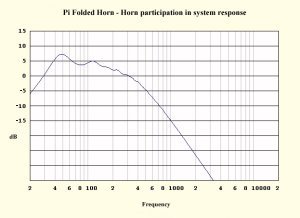Scott Simonian
Screenwriter
- Joined
- Jun 20, 2001
- Messages
- 1,281
Wouldnt a BIG 15" woofer sound really lousy on most of the frequencies? I mean, wouldnt it sound muddy and undefined in the WHOLE mid-range frequencies?
Im just not sure. I might be building my own full-range towers after I build my first DIY sub and would like the best performance.
It seems like you are just looking for high SPLs. Im not sure. I could be interpreting the topic or your selection or just my knowledge on these things wrong.
Hell, Im all for BIG, BADASS woofers !!!
Im just not sure. I might be building my own full-range towers after I build my first DIY sub and would like the best performance.
It seems like you are just looking for high SPLs. Im not sure. I could be interpreting the topic or your selection or just my knowledge on these things wrong.
Hell, Im all for BIG, BADASS woofers !!!


